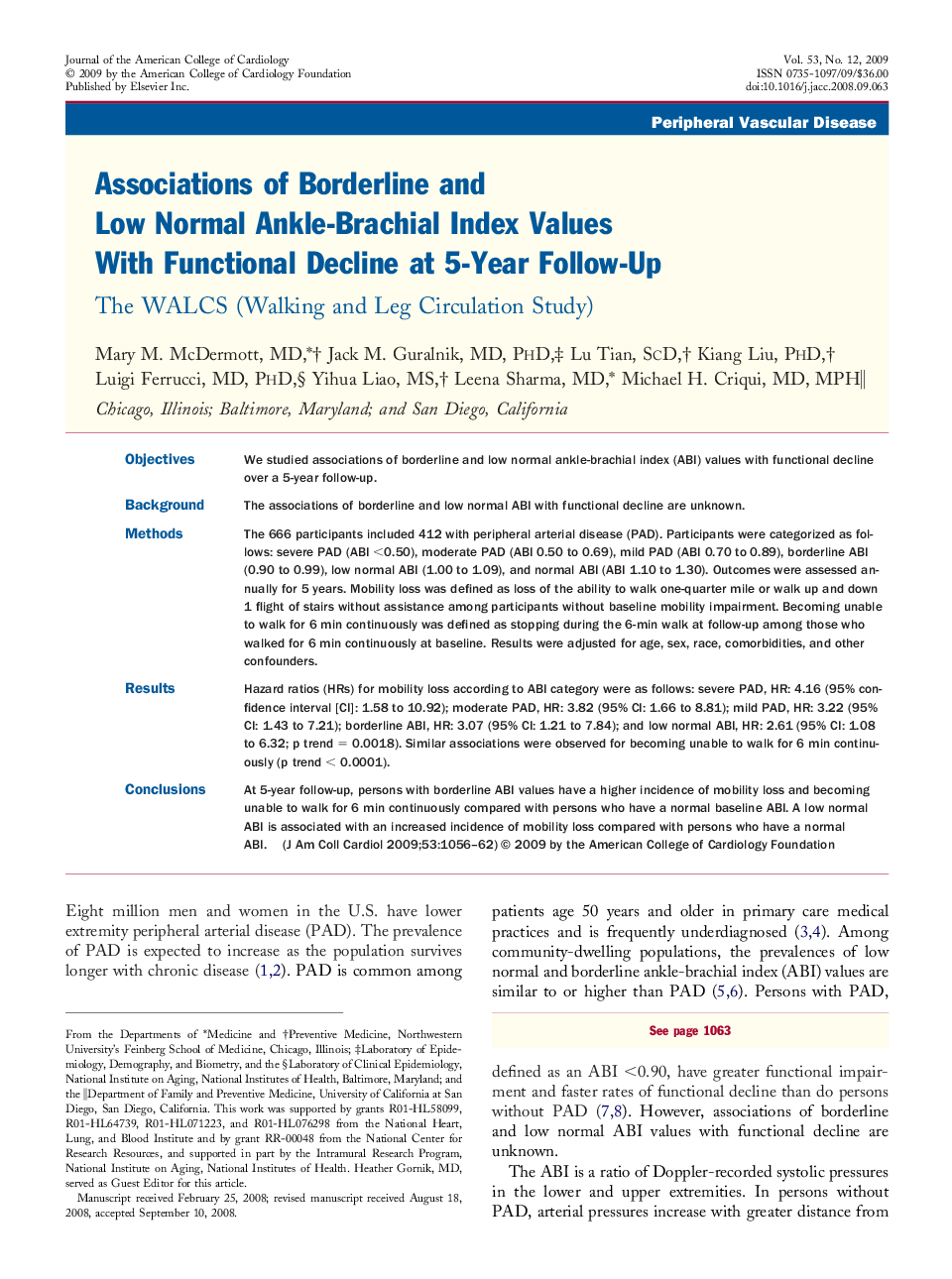| کد مقاله | کد نشریه | سال انتشار | مقاله انگلیسی | نسخه تمام متن |
|---|---|---|---|---|
| 2952822 | 1577377 | 2009 | 7 صفحه PDF | دانلود رایگان |

ObjectivesWe studied associations of borderline and low normal ankle-brachial index (ABI) values with functional decline over a 5-year follow-up.BackgroundThe associations of borderline and low normal ABI with functional decline are unknown.MethodsThe 666 participants included 412 with peripheral arterial disease (PAD). Participants were categorized as follows: severe PAD (ABI <0.50), moderate PAD (ABI 0.50 to 0.69), mild PAD (ABI 0.70 to 0.89), borderline ABI (0.90 to 0.99), low normal ABI (1.00 to 1.09), and normal ABI (ABI 1.10 to 1.30). Outcomes were assessed annually for 5 years. Mobility loss was defined as loss of the ability to walk one-quarter mile or walk up and down 1 flight of stairs without assistance among participants without baseline mobility impairment. Becoming unable to walk for 6 min continuously was defined as stopping during the 6-min walk at follow-up among those who walked for 6 min continuously at baseline. Results were adjusted for age, sex, race, comorbidities, and other confounders.ResultsHazard ratios (HRs) for mobility loss according to ABI category were as follows: severe PAD, HR: 4.16 (95% confidence interval [CI]: 1.58 to 10.92); moderate PAD, HR: 3.82 (95% CI: 1.66 to 8.81); mild PAD, HR: 3.22 (95% CI: 1.43 to 7.21); borderline ABI, HR: 3.07 (95% CI: 1.21 to 7.84); and low normal ABI, HR: 2.61 (95% CI: 1.08 to 6.32; p trend = 0.0018). Similar associations were observed for becoming unable to walk for 6 min continuously (p trend < 0.0001).ConclusionsAt 5-year follow-up, persons with borderline ABI values have a higher incidence of mobility loss and becoming unable to walk for 6 min continuously compared with persons who have a normal baseline ABI. A low normal ABI is associated with an increased incidence of mobility loss compared with persons who have a normal ABI.
Journal: Journal of the American College of Cardiology - Volume 53, Issue 12, 24 March 2009, Pages 1056–1062